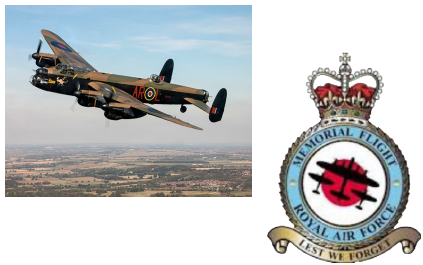WAR GRAVE
WILLIAM HOWARD WARREN (grave 90)
SERGEANT
57 SQUADRON
ABOUT MY LIFE
Born: 22nd November 1920
Died: 11th November 1942
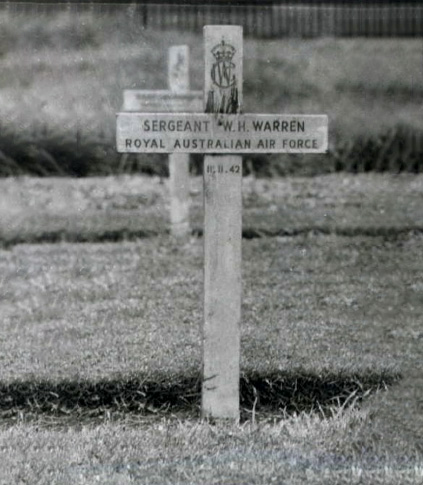
I was born in Watson’s Bay, the son of William and Lilian Warren, of Punchbowl, New South Wales, Australia. In civilian life I had been a dispensing clerk for an opticians in Sydney. I was a keen footballer and even represented Sydney, I also enjoyed competitive tennis. Prior to joining up full-time, I had served for 18 months as an Army Reservist, training to use a Lewis machine gun in the anti-aircraft role.
I enlisted in the Royal Australian Air Force on 28th April 1941and arrived in Vancouver, Canada on 3rd July 1941, to begin my aircrew training. I arrived at my first operational unit, 57 Sqn at Scampton 23rd August 1942, less than 2 months before our final flight.
MY AIRCRAFT
The Avro Lancaster was a development of the ill-fated Avro Manchester. The twin engine Manchester had been an unmitigated disaster, under-powered and crash prone. Undeterred, the designer Roy Chadwick increased the wingspan and added two more engines. From a disastrous start, the most legendary bomber of all time was born.
From 1942 onwards the Lancaster, together with the Handley Page Halifax, provided the backbone of bomber command. Equipped with four Rolls Royce Merlin engines, the same engine which powered the equally legendary Spitfire, the Lancaster could deliver 18,000 lbs of bombs to targets up to 2500miles away. Later versions of the Lancaster carried even bigger specialist bombs designed by Barnes Wallis of Dambusters fame.
During the Second World War, The Lancaster conducted a total of 156,000 sorties and dropped 608,612 tons (618,378,000 kg) of bombs. A total of 7377 Lancasters were built, of which 3736 were lost to enemy action and accidents.
Today, only 17 complete Lancasters survive, with just two flying examples. The Battle of Britain Memorial Flight’s PA474 and the Canadian Warplane Heritage’s FM213.
Crew: 7
Span: 102 ft
Length: 69 ft 6 in (tail up)
Height: 20 ft 6 in (tail up)
Empty weight: 37,000 lbs
Loaded weight: 65,000 lbs
Engine: 4 x Rolls-Royce Merlin 24 V-12 engines
Engine power: 1,620 hp at 3,000 rpm (1,208 kW)
Maximum speed: 275 mph
Range: 2,530 miles with 7,000 lbs of bombs
Ceiling: 22,000 ft
8 x .303-caliber machine guns
18,000 lbs of bombs
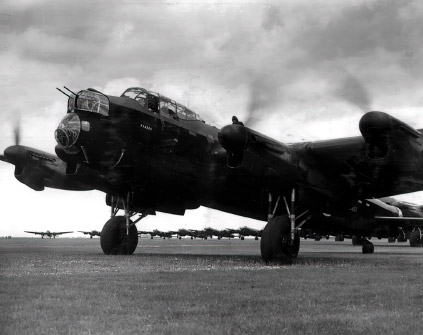
MY ROLE
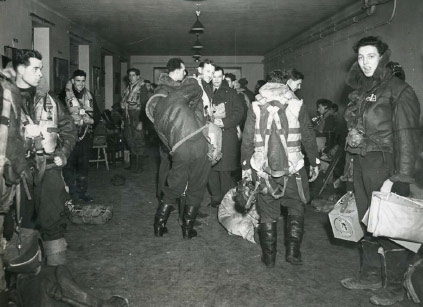
I was the air gunner and wireless operator of this aircraft.

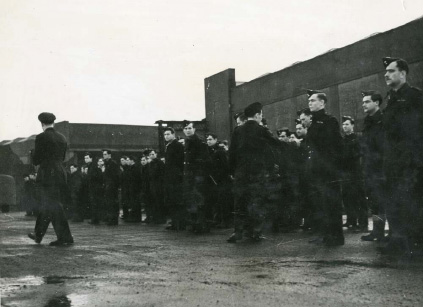
MY SQUADRON
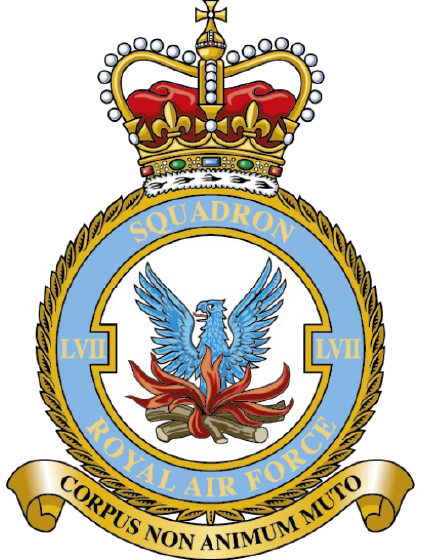
Motto: Corpus non animum muto
‘I change my body not my spirit’
57 Squadron was formed on 8th June 1916 as part of the Royal Flying Corps, initially as a training unit. By October of the same year, they received their first operational type, the Royal Aircraft Factory FE2d, with which they would fly fighter reconnaissance missions in France.
The pace of aviation technological development was rapid and by the middle of 1917, the FE2d was obsolete and the squadron suffered severe losses, on one occasion losing 5 aircraft in a single mission. The situation was only reversed when the squadron received the more advanced Airco DH 4 and switched to a bombing role. Following the end of hostilities, the squadron was disbanded on 31st December 1919.
57 Squadron reformed on 20th October 1931, flying the Hawker Hart in the light bomber role. As the world moved closer to war, they converted to the Bristol Blenheim, a type though by the RAF to be on the cutting edge of light bombers. In reality, it was already obsolete at the outbreak of war and by November 1940, they were flying the Vickers Wellington from RAF Feltwell. In September 1942, they moved to Scampton and converted to the Avro Lancaster, with which they were to fight the remainder of the war.
In the post war years, they first flew the Avro Lincoln, before entering the jet age with the English Electric Canberra. They next moved on to the nuclear armed Handley Page Victor, holding Britain’s nuclear deterrent. When this was passed to the Royal navy, the Victors were used in the air-to-air refuelling role, famously providing fuel to the Vulcans that undertook the Blackbuck missions during the Falklands War.
From 1992-2002, the squadron performed the strategic transport mission with it Lockheed C130 Hercules and in 2008, it switched roles back to its roots as a training squadron, flying the Grob Tutor and Prefect, a role which it performs to this day.
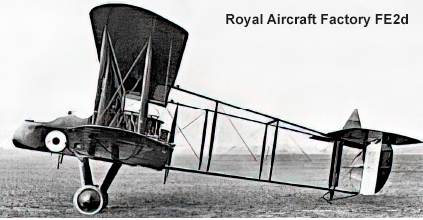
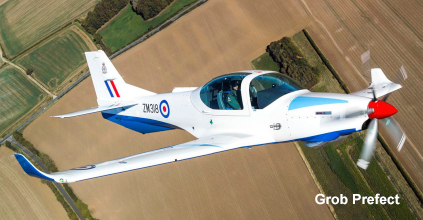
THE ACCIDENT
Our mission had been to lay anti-shipping mines in the Gironde Estuary, near Bordeaux and we took-off from Scampton at 17:21hrs, not long after it was completely dark. The mission itself had gone well, but on our return the weather over Scampton had got worse and the squadron was told to divert to RAF Tangmere.
However, the decision ultimately rests with the pilot and he decided to carry on and attempt a landing at Scampton. The weather at the time was a 2000ft cloud base with 2-3 miles visibility meaning the weather was marginal, but should still have been within our limits.
At twenty five minutes past midnight, we acknowledged a radio message telling us that Scampton lay to the Northwest of us. Just 5 minutes later, our Lancaster W4262, struck Girsby Park, Burgh on Bain near Market Rasen, killing the whole crew instantly.
CASUALTIES – 11TH NOVEMBER 1942
Flight Sergeant Ronald Ross Abercrombie (Pilot) (Buried Glagow Crematorium)
Sergeant James Harold Barry (Navigator) (Buried Scampton) MORE
Sergeant Frederick Oswald Button (Rear Gunner) (Buried in Thurrock cemetery)
Flight Sergeant Michael Gerrard Everard (Wireless Air Gunner) (Buried Navan, Ireland)
Sergeant Andrew Bradshaw Jackson (Flight Engineer) (Buried Macclesfield Cemetery)
Sergeant William Howard Warren (Air Bomber) (Buried Scampton)
Sergeant John Ernest Young (Mid Upper Gunner) (Buried Wallasey Cemetery)
ON THIS DAY IN WORLD WAR TWO – 11TH NOVEMBER 1942
The Indian minesweeper Bengal sinks two Japanese merchant raiders despite being outgunned.
In Libya, the British Eighth Army occupies Bardia, without firing a single shot.
Rommel is facing defeat in North Africa.
Where Next
Visit Lancaster PA474 at the Battle of Britain Memorial Flight RAF Coningsby.
BBMF Visitor Centre, Dogdyke Road, Coningsby, LN4 4SY Telephone: 01522 782040
